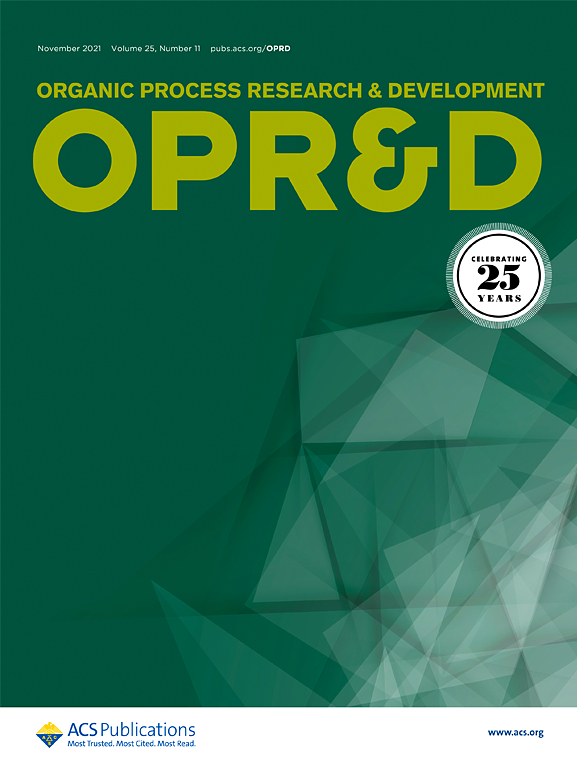Continuous Purification of a Conjugated Short Interfering RNA Therapeutic Using Anion Exchange Twin-Column Chromatography (MCSGP)
IF 3.1
3区 化学
Q2 CHEMISTRY, APPLIED
引用次数: 0
Abstract
Multicolumn Countercurrent Solvent Gradient Purification (MCSGP) process technology improves yields and production efficiency in clinical and commercial manufacturing of therapeutic APIs such as peptides and oligonucleotide drugs (ONDs). In this case study, we developed an MCSGP process for the purification of a sugar-conjugated sense strand of a therapeutic siRNA (short interfering RNA) using anion exchange (AIEX) chromatography and state-of-the-art twin-column chromatography equipment. MCSGP is relatively complex and requires specialized process development tools to optimize and implement. We describe a simplified, software-aided MCSGP method development procedure for fast transfer from batch to continuous-mode chromatography. As expected with MCSGP, the yield improved from 80% to 93% compared to single-column chromatography, allowing for proportional downscaling of steps preceding and including oligonucleotide synthesis. This greatly decreases manufacturing costs and reduces waste (e.g., byproducts, solvents, and reagents). In addition to increasing the OND yield, throughput was increased by 87%. Other generic benefits of implementing MCSGP are also outlined; for example, due to automation, process robustness is improved; column dimensions and resin volumes are downscaled; laborious side-fraction rechromatography is eliminated; and fewer “in-process control” samples are generated, reducing the manufacturing support burden. The automation enabled by MCSGP is a significant advancement in the commercial-scale manufacturing of APIs.

阴离子交换双柱色谱(MCSGP)连续纯化治疗用共轭短干扰RNA
多柱逆流溶剂梯度纯化(MCSGP)工艺技术提高了多肽和寡核苷酸药物等治疗性原料药的临床和商业生产的产量和生产效率。在本案例研究中,我们开发了一种MCSGP工艺,用于使用阴离子交换(AIEX)色谱和最先进的双柱色谱设备纯化治疗性siRNA(短干扰RNA)的糖偶联意义链。MCSGP相对复杂,需要专门的过程开发工具来优化和实现。我们描述了一个简化的,软件辅助的MCSGP方法开发程序,用于从批处理快速转移到连续模式色谱。与单柱色谱法相比,MCSGP的产率从80%提高到93%,允许按比例缩小寡核苷酸合成之前和包括寡核苷酸合成在内的步骤。这大大降低了制造成本并减少了浪费(例如,副产品,溶剂和试剂)。除了提高OND产率外,吞吐量提高了87%。还概述了实施MCSGP的其他一般好处;例如,由于自动化,流程健壮性得到了提高;柱尺寸和树脂体积缩小;省去了繁琐的侧分重色谱;生成的“过程控制”样品也更少,从而减少了制造支持负担。MCSGP实现的自动化是api商业规模制造的重大进步。
本文章由计算机程序翻译,如有差异,请以英文原文为准。
求助全文
约1分钟内获得全文
求助全文
来源期刊
CiteScore
6.90
自引率
14.70%
发文量
251
审稿时长
2 months
期刊介绍:
The journal Organic Process Research & Development serves as a communication tool between industrial chemists and chemists working in universities and research institutes. As such, it reports original work from the broad field of industrial process chemistry but also presents academic results that are relevant, or potentially relevant, to industrial applications. Process chemistry is the science that enables the safe, environmentally benign and ultimately economical manufacturing of organic compounds that are required in larger amounts to help address the needs of society. Consequently, the Journal encompasses every aspect of organic chemistry, including all aspects of catalysis, synthetic methodology development and synthetic strategy exploration, but also includes aspects from analytical and solid-state chemistry and chemical engineering, such as work-up tools,process safety, or flow-chemistry. The goal of development and optimization of chemical reactions and processes is their transfer to a larger scale; original work describing such studies and the actual implementation on scale is highly relevant to the journal. However, studies on new developments from either industry, research institutes or academia that have not yet been demonstrated on scale, but where an industrial utility can be expected and where the study has addressed important prerequisites for a scale-up and has given confidence into the reliability and practicality of the chemistry, also serve the mission of OPR&D as a communication tool between the different contributors to the field.

 求助内容:
求助内容: 应助结果提醒方式:
应助结果提醒方式:


